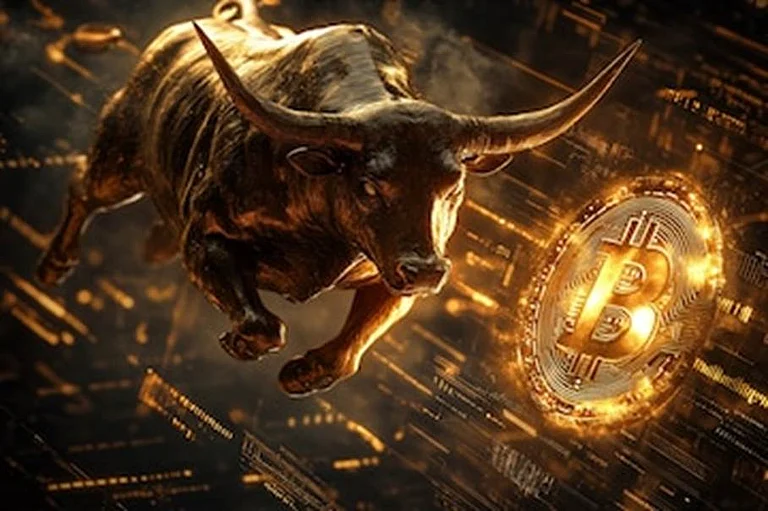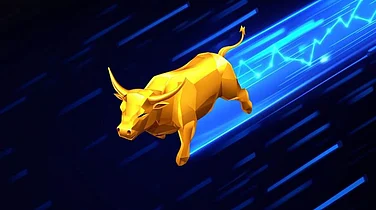Scarcity is perhaps the strongest value driver — both in economics and cryptocurrency markets too. In cryptocurrencies, scarcity is deliberately manufactured by way of some mechanics inserted into a token's design, generally known as its tokenomics. Two of the most common mechanisms supporting scarcity are token burns and staking models.
Both affect the flow of tokens in the market: irreversibly burning destroys them, and staking simply freezes them out, removing them from circulation. Collectively, these mechanisms control inflation, stabilize price, and reward long-term holding — all of which are key to shaping a project's economy.
This article analyzes how each mechanism works, how they create scarcity, what they do in a bull market, and the benefits and drawbacks you must be aware of as an investor or enthusiast.
What Are Token Burns and How Do They Work?
Token burn is when a project burns a certain number of its tokens, effectively rendering them lost forever from circulation. The most common way to do that is by sending tokens to a special burn wallet — an address for which there is no private key, and thus the tokens cannot be retrieved.
When tokens are burned, they are irretrievable. Supply decreases, and assuming demand stays equal or continues growing, each of the available tokens becomes proportionally more rare.
How Token Burns Work: A Step-by-Step Guide
Burn decision: An amount to burn or burn schedule is set by the project team or governance team.
Send to a burn address: Tokens are sent to an unusable "dead" wallet.
Supply drop: These tokens are removed from the supply of available tokens forever.
Market impact: Scarce — there are fewer tokens available to buy and sell.
Why Projects Burn Tokens
To fight inflation: Burning prevents over-supply expansion.
To thank holders: Scarce makes currently holding tokens more valuable.
To link token value with network activity: For example, certain projects burn a percentage of transaction fees or income.
To convey long-term intent: Regular or open burns demonstrate commitment to sound supply management.
Example
Binance's BNB is arguably the most popular example. Binance does quarterly volume-based token burns, gradually drawing down the total supply until it reaches its capped level. Not only does this create scarcity but it also causes the token's value to correlate with the growth and usage of the platform.
Putting Staking and Scarcity Together
Staking is the act of locking tokens in a blockchain's smart contract in order to contribute to network security, confirm transactions, or vote on governance. In exchange, participants receive staking rewards — often more tokens.
The most important impact of staking on scarcity is that it takes tokens out of circulating supply for an amount of time. Those locked tokens can't be traded, sold, or transferred, lowering market liquidity and raising scarcity.
How Staking Works
Token holders lock up tokens in a staking pool or validator node.
Tokens are immobilized for a certain time frame — anywhere from a couple of days to months.
Holders are rewarded for helping secure or stabilize the network.
Holders can restake or withdraw tokens once the staking time frame has elapsed.
Why Staking Creates Scarcity
Short-term supply reduction: Tokens that are locked are effectively removed from the online pool.
Incentivized holding: Staking rewards encourage individuals to hold tokens long-term instead of trading them.
Stability: Lower frequency of sales reduces volatility and stabilizes the market.
If a high percentage of a project's total tokens are staked, the liquid supply in circulation is lower — which can maintain scarcity even in times of increased trading activity.
The Combined Effect: Token Burns + Staking = Built-In Scarcity
When token burning and staking mechanisms function together, they constitute a powerful supply management mechanism and scarcity-preserving mechanism. Burns create perpetual scarcity, whereas staking creates fleeting scarcity by cementing tokens in supply.
Combined, this preserves immediate and future supply control with equilibrium of deflationary pressure and network participation.
How They Work Together
Token burns decrease the total supply of tokens that will ever exist irreversibly.
Staking consistently removes part of the tokens from circulation and moves them back to the owners.
They are created to reduce active supply and boost community involvement and network worth.
In times of market mania — such as during a bull run — this mixture is likely to be a focus of investors. When demand rises and supply is static, scarcity can then drive market movement. But it depends on actual usage and faith — rather than mania.
Scarcity in Crypto Tokenomics
Scarcity in tokenomics is not by design — it's a deliberate one, meant to stabilize ecosystems and reward commitment.
Economic Value: Reduced supply creates the illusion of scarcity, which can enhance perceived value.
Behavioral Impact: Investors will be more inclined to hold tokens if they know that supply is running out or locked.
Network Health: Scarcity discourages continuous speculation and motivates utility-based growth.
Inflation Control: Controlled supply avoids diluting the token value over the long term.
Scarcity alone is not sufficient to guarantee success, though. A project needs strong demand, working utility, and open governance too. Without these, even well-designed scarcity mechanisms fail.
Token Burns and Staking: Benefits and Risks
A concise rundown of their advantages and disadvantages — individually, as well as when combined:
Aspect | Token Burns | Staking Models |
Primary Function | Permanently removes tokens from total supply | Temporarily locks tokens out of circulation |
Impact on Scarcity | Creates lasting scarcity by reducing supply forever | Creates temporary scarcity by reducing liquid supply |
Key Benefit | Controls inflation supports long-term token value | Rewards holders strengthens network participation |
Investor Effect | Boosts confidence by showing supply discipline | Encourages long-term holding and loyalty |
Market Drawback | If demand is weak burn has little effect | Locked tokens reduce liquidity may cause price dips upon release |
Real-Life Examples
Ethereum (ETH)
And with the London Hard Fork (EIP-1559), Ethereum implemented a burn mechanism that burns a portion of the fees from transactions. With staking ETH on Ethereum 2.0, this double-edged mechanism is always managing supply — one burning, the other locking. As demand rises, more ETH get burned, tightening supply and promoting scarcity.
BNB (Binance Coin)
BNB incorporates quarterly burns based on trading volume and also provides staking via Binance Smart Chain. The double whammy of these two mechanisms guarantees both short-term and long-term scarcity across multiple applications.
Cardano (ADA) and Solana (SOL)
These blockchains rely significantly on staking engagement, with more than 60–70% of total tokens staked at certain points in time. The high percentage of supply that is locked in place steadies prices and instills confidence in the security of the ecosystem.
Conclusion
In every bull market, the spotlight often falls on tokens that master the art of scarcity through burning and staking. Token burning and staking protocols are essential systems that set the economy of a cryptocurrency. Burns irrevocably remove supply and demonstrate commitment to long-term value, while staking locks up tokens, rewards holding, and increases network security. Both induce scarcity, encourage holding, and reduce speculative volatility.
But only scarcity will not do it. The true power of a project is its utility, governance, demand, and transparency. Investors need to look beyond the surface — taking into account how burns and staking affect a project's overall ecosystem and not just its cost.
With each cycle, scarcity-driven tokens dominate discussions, but long-term value always comes back to fundamentals. When properly implemented, burns and staking aren't simply fiscal gymnastics — they're a signal of a properly designed, sustainable crypto economy built to endure beyond the bull market.
Common Questions (FAQs)
Q1. Do token burns necessarily increase the price of a token?
Not always. While token burns reduce coins' availability, a price increase depends on whether demand rises as well. Without investor or user demand, a burn may not be effective.
Q2. Are tokens burned forever?
Yes. When tokens are sent to a burn address, they can never be recovered or re-released — they're permanently destroyed.
Q3. Are staking tokens potentially dangerous?
Yes, staking consists of locking tokens for a certain amount of time. They cannot be sold in this period, and in case the validator acts dishonestly or the network is under an attack, some staked tokens can be penalized (in systems with "slashing").
Q4. What impact do burning and staking have on a project's inflation rate?
They both decrease inflation. Burns permanently reduce the token supply, and staking decreases circulation and prevents selling too much.
Q5. What happens during a bull market?
During a bull market, demand for solid crypto projects increases. Tokens with built-in scarcity through burns and staking can have their price effect amplified by decreasing supply and increasing interest.
Q6. How do investors verify token burns and staking activity?
Blockchain explorers will most likely record burn transactions and staking information. Platforms like CoinMarketCap and Etherscan provide open-source data on total supply, circulating tokens, and burn events.
Q7. Why Scarcity Alone Isn't Enough?
While scarcity is the foundation of value, it is only one aspect of it. A deflationary supply model can only work if supported by utility, social trust, and maintaining demand. If a project's token is being burned aggressively but has no clear purpose or ecosystem established, then scarcity is rendered useless.
Sustainable tokenomics must combine scarcity with real utility — such as access to a decentralized service, governance, or membership in a network. The strongest crypto economies strike a balance between scarcity, utility, and transparency to create real long-term value.



















![2025년 11월 온라인 카지노 사이트 모음, 바카라 사이트 순위 [추천15] 2025년 11월 온라인 카지노 사이트 모음, 바카라 사이트 순위 [추천15]](https://media.assettype.com/outlookindia/2025-10-30/4qp1losl/2025년-온라인-카지노-사이트-모음-바카라-사이트-순위-추천15?w=200&auto=format%2Ccompress&fit=max)




